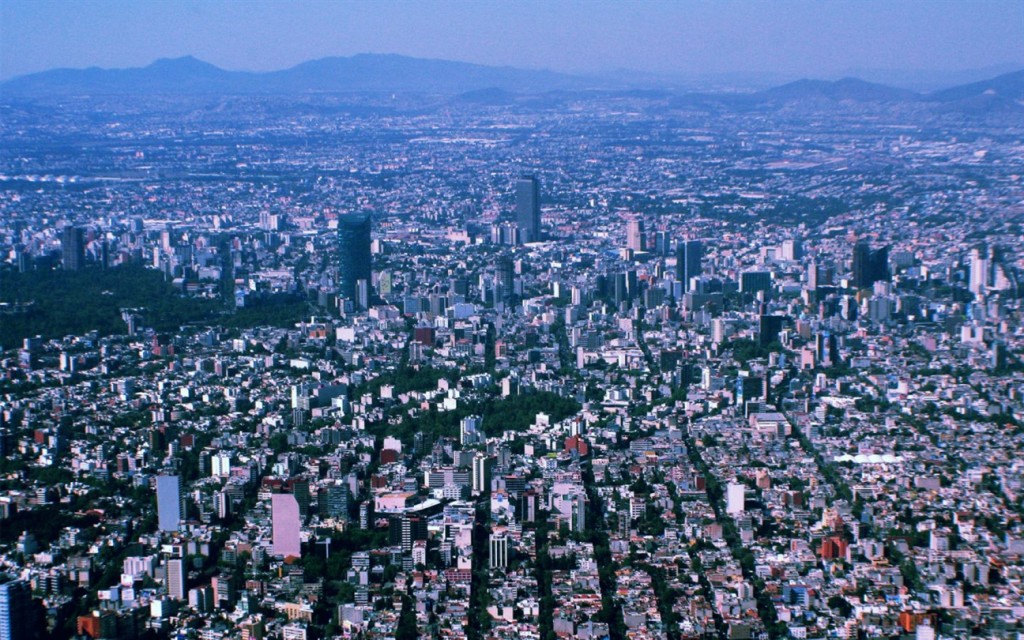Billions of tons of groceries from agriculture are transported to cities all around the globe every day to feed its dwellers. Produced anywhere in the world and transported as cargo on roads, rail or water from the farm gate into cities, this food transport is linked to a huge amount of CO2 emissions.

Exploring options to reduce this “food-print”, a team of city researchers from the Potsdam Institute for Climate Impact Research (PIK) now provides what appears to be the first global analysis of the potential of local food production to feed hungry cities in present and future.
As it turns out, many urban residents in many parts of the world could be nourished by local agriculture. However, climate change might take that option off the table, if greenhouse gas emissions are not rapidly reduced.
Apples from New-Zealand, Avocados from California, steaks from Argentina, to name just a few examples – agricultural goods are transported all around the globe across all distances to provide citizens with nourishment.
“Already, this comes with an enormous ‘food-print’ and we know that a growing world population not only means growing urban infrastructures but also growing resource consumption and greenhouse gas emissions,” co-author Prajal Pradhan says. “That’s why we asked ourselves: What would happen if cities source their food from local agriculture in areas surrounding them? How many people could be nourished, how much CO2 could be avoided by reduced transport needs? And last: would unmitigated global warming change the picture?”
South Asia has the biggest potential to go local with agriculture
About 35 percent of urban residents could be nourished by utilising local land resources, the researcher’s analysis reveals, but the situation is quite diverse on a global scale. Regions like Southern Asia with countries such as India could benefit a lot from local agricultural production – they could nourish more than 80 percent of their city population.
However, if climate change, urban population growth and lifestyle changes keep on accelerating, this could completely change the picture and take the option off the table.
The researchers identified urban growth as the factor that will have the strongest impact on future urban food demand, followed by dietary changes, e.g. toward more meat consumption. Finally, climate change could reduce options by harming agricultural production.
While in South Asia urban growth might reduce the local nourishment potential by about 30 percent in 2050, in Northern Africa it is climate change that reduces the potential by about 30 percent in 2050. In regions like Northern America or Western Europe the situation will, according to the study, not change that much.
When it comes to consumption patterns, cities are not only characterised by administrative boundaries, but rather as functional units including the urban hinterland. The researchers focused on city clusters, like twin cities or regions with several smaller cities close to each other, with a population of more than 100.000 people and examined 4121 of these clusters around the globe. The advantage of this approach is that close urban administrative entities are considered as one functional urban area.
Therefore, New York comprises more than 1.000 administrative entities on the east coast of the USA, while the largest city clusters in terms of inhabitants were areas around megacities like Guangzhou, Tokyo and Mexico City with a population of up to 40 million people each. Using this approach, the researchers analysed the impact of and for 2.5 billion urban residents – this is equal to about 70 percent of urban population in 2010.
“Cities are at the heart of the climate problem”
Using a new Urban Assessment Model developed at PIK, the scientists analysed the nourishment potential of local agriculture on land surrounding the cities and investigated food transport in order to show how optimizations would reduce the environmental “food-print” of urban areas.
“Of course, feeding our cities by local agriculture is not a switch we could simply flip, and self-sufficient cities would not be able to just duplicate what’s on our plates today,” lead-author Steffen Kriewald explains. “Regional agriculture would not be able to produce all foods on our menu in a globalised food world; however, nutrition requirements could be met in many regions of the world, our study shows.”
“Cities are at the heart of the climate problem and pivotal for sustainable future development,” co-author and co-chair of PIK’s Climate Resilience Research Department, Juergen Kropp, concludes.
He adds: “Our study provides the first global analysis on the global potential of local agriculture and combines it with other relevant effects. We’re able to show that an optimized local production would decrease emissions from food transport by a factor of 10 – about 4 percent of global CO2 emissions could hence be reduced this way. This is a conservative number, as for instance air transport was not yet considered due of the lack of available data.
“Local production therefore would reduce the dependence on global food production chains, while in contrast further uncontrolled urban growth, climate and dietary changes would reverse this effect. We show that producing food locally could acts as a kind of adaptation as it ensures local food security, can close local nutrient cycles and therefore would help to protect the climate.”
